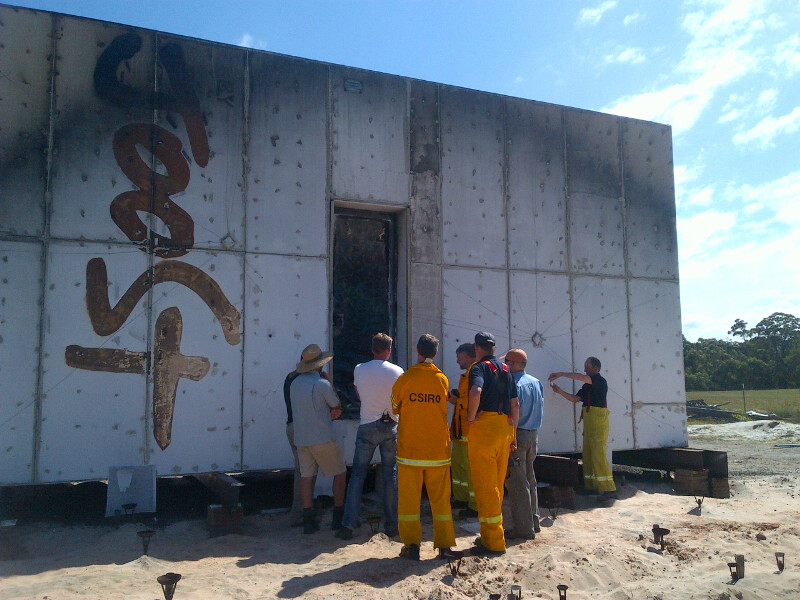Update 1/3/12 – Justin Leonard, the CSIRO scientist involved with the burn, has answered some questions in the comments section.
In the fight between straw and fire, what do you think would come out on top? Yesterday our fire scientists found out when they tried to burn down a house made of straw.
They took an eco-friendly house with ModakBoard cladding, a steel frame and walls insulated with straw and exposed it to a worst case bushfire scenario. Did it survive? Results say, yes it did.
The house, created by sustainable designer Joost Bakker, may provide an environmentally friendly building option for bushfire-prone areas.
The affectionately named “straw house” was blasted with a range of real life bushfire conditions, from a radiation build up phase to full flame immersion and then a radiation decay phase.
So how did it fair? The external temperature reached a scorching 1000oC while inside the house was a cool 35oC. There was minimal damage to the straw house’s cladding and while the steel frame heated up to 100–110oC it remained structurally sound and intact. Attached to the house was a about 70–odd sensors that measured what was happening inside and outside the building, so there are plenty more results to be analysed. For now, we know that when exposed to extreme bushfire conditions the little house that could, stood.
Big thanks go out to the New South Wales Rural Fire Service. They let us use the Eurobodalla Rural Fire Service Training Facility near Mogo – the only facility in Australia with a bushfire flame front simulator (pretty much a giant barbeque) that can test entire buildings under realistic bushfire conditions. Plus they were the only guys who could have put out the fire if the house did go up in flames.


25th June 2021 at 8:17 pm
An actual lime-rendered bale wall would be a more appropriate test bed but I would forgive the csiro as not everyone knows how to render! 45mm of lime render is fire-proof and will certainly insulate the straw from any danger of ignition. All surfaces of straw in a bale house should be rendered. As in any house, the quality of windows, doors and sealing are the deciding factors in its’ susceptibility to bushfire. Certainly bale houses can be rated to BAL 40 settings.
17th March 2013 at 9:26 pm
what were the brand of the doors/windows
9th October 2012 at 11:35 am
I would like to see a separate listing of all the construction materials . The door in particular and any unusual techniques .
I live in the bush on the Blue Mountains and I wonder whether this design has potential as an emergency bunker .
I heard the tale end of an interview on Radio National about this experiment . He seemed to be saying that the building had straw bales in the ceiling ?
5th October 2012 at 10:32 pm
Pretty unrealistic, no windows or ventilation in the box they pretended was a model house, also this in no way reproduced the firestorms that real bushfires create, or nobody would have been able to remain close enough to take pics….
9th October 2012 at 4:32 pm
Hello Honesty, I think your question has already answered this above;
“The wall cavities are ventilated through holes which are covered with metal mesh that prevents ember entry. There are no vents between the wall cavity and the inside space. ”
and
“The house design uses a door that also doubles as windows, we only tested one in this house, while a large house would obviously have many of them. We carefully measure the heat and smoke entry through the door system so that you can estimate the exposure to people in houses with many more windows/doors.”
Comments above by Justin Leonard March 1, 2012 at 9:50 am